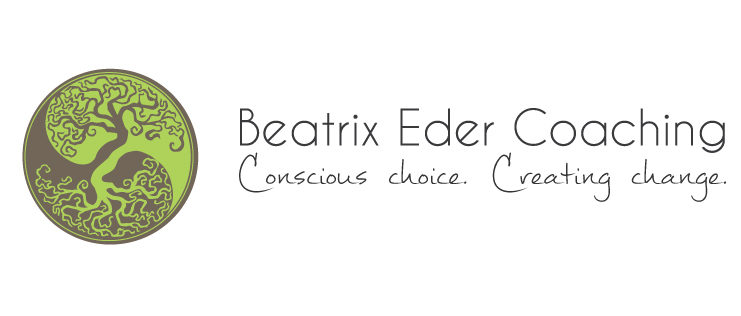
Coaching new hires: Set them up for success
Coaching is an important element in onboarding new & transitioning employees to integrate them socially and culturally in the new work environment. With the support of coaching they become effective faster and the time to break-even is reduced.
Hiring failures
Failure rates among new hires are staggeringly high, independently of their role and hierarchical level within the organization. Depending on which studies you are referring to, they vary between 40-50%, meaning that about half of the hired managers and executives leave the company within the first year.
If these were numbers about customer retention, investors might request a change in management. Just like customers, employees choose to join an organization and if things go well, they choose to stay, they choose to deliver their best and they choose to be advocates of the company. Yet they also can choose to disengage and leave - and this happens often in the critical phase of onboarding.
Onboarding has a critical impact on current employees, the new employee and the organization itself. Most companies spend their energy on hiring and interviewing and onboarding is ticked off quickly as a parenthesis between arriving at a company and starting the actual work. Both the company and the newly hired or transitioning employee are under pressure to prove that the hiring decision was a good one, both strategically and financially.
Onboarding: You never get a second chance to make a first impression
The 6-12 months in a new work environment is often a make-or-break period: Most employees take the decision of whether they will stay in an organization throughout their first six months of employment.
To counter the problem of high failure rates in new hires & transfers, companies are turning their efforts toward retention and that starts with onboarding. Strategic onboarding is investment into an organization’s biggest asset: in human capital.
Main reasons for failure
In these situations of transitions, many of the rules are implied, relationships have to be developed and teams have to be solidified. Effective onboarding is a transformational process that reshapes how people enter your organization and how they are engaged and effective from the very start. The most common factors that hinder the integration of a new employee into the work environment are within the area of social integration:
1) Ambiguity of role
Understanding the role and its expectations is a good indicator for job satisfaction and organizational commitment. It’s opposite, role ambiguity can hinder adjustment and lower performance.
2) Lack of personal effectiveness
The more an employee is confident to deliver a good job, the more they are motivated and enter a positive cycle of success. Organizations and line managers can help by recognizing decisions and initiatives of the new employee that went well.
3) Social disconnection
Feeling socially connected and accepted by peers and superiors is an important element in creating trust and cohesion. Social integration helps new employees becoming from an organizational outsider into an organizational insider.
4) Poor understanding of organizational culture and values
Employees who have a solid understanding and acceptance of organizational culture are more satisfied and more productive. Company culture encompasses accepted behaviors, communication style, corporate politics and brand narratives.
It is relatively easy to understand tangible aspects of an organizational culture such as reporting relationships, budgeting processes or benefit schemes.
Understanding intangible aspects like values and norms, language and jargon, celebrations and insider stories is a whole different story.
5) Poor soft skills
The majority of interview questions concentrate on testing technical skills of the candidate. However, the Global Talent Management Survey of Leadership IQ found that a lack of technical skills accounts for barely 11% of hiring failures. As workplaces have become more dispersed and team cultures more collaborative, the so-called soft skills such as communication skills, problem solving and emotional intelligence are becoming more important.
When people experience these elements, they often feel disconnected, unprepared, overwhelmed and undervalued. When these impressions last, they negatively impact commitment, teamwork and performance. In worst case the person even leaves the organization, further increasing costs of disruption, recruitment and on-boarding again.
Leadership attitude
Companies want employees with a leadership attitude – whether they are already seasoned executives, experienced senior managers or aspiring young talents. A person’s capabilities to understand complex situations, to focus on a common goal, to communicate well with various partners, to be able to adapt to new situations – all contribute to the perception of being a leader.
These qualities are not innate, they are learned, practiced and embodied over time. Leaders are not born, they are made.
Coaching helps minimizing risk and maximizing potential
Individual coaching is a short- to medium-term relationship between an individual and a coach with the purpose of creating change. Coaching supports the individual to grow mentally and emotionally and improve their habits, behavior, actions and reactions by increasing awareness, strengthening identity and developing talents.
Providing coaching to onboardingand transitioning employees provides them
- A safe space to discuss challenges and ambiguities they are going through. Usually, the higher a person is in the organizational hierarchy, the more they are afraid to openly speak about their questions and dilemmas.
- A sounding board to brainstorm strategies together and work with the challenges of a given situation
- A partner on the journey of insight into the strengths, preferences and functioning of their personality
- A creative lab to paint a vision what can be accomplished
- A stepping stone to personal growth / a partnership to go through the discomfort of change and ask hard questions when necessary
Onboarding coaching is useful for
- Externally hired new senior managers or executives
- Internally transitioning senior managers or executives
- Expatriate taking on a leadership role
- Technical experts beginning a broader leadership role
- New hires starting in a position with immediate challenges (high turnover, low morale, resentment about new leader etc)
- Leaders filling a position that has just been created
- Leaders whose supervisors are at a different location
- New employees joining the company after a merger or acquisition
Investing in proper onboarding and using the support of an external coach has considerable benefits for the organization and its employees.
Employees gain more clarity about their roles, expectations and awaiting challenges. Through coaching sessions, they can explore their questions around company culture, shared values and relationship dynamics between teams and departments. Coaching employees during the phase of onboarding helps them to feel supported and valued and gives opportunity to clear communication and immediate feedback.
Organizations investing in onboarding coaching by external professionals accelerate the time to productivity of the new employee. Such companies increase the visibility of new hires which in turns helps with their social integration. Providing coaching support during the onboarding phase improves internal communications, brings on a coaching culture, improves retention rates and the brand image of the employer.
Overall, the cost of investing in onboarding coaching is negligible compared to the losses in productivity to get a new person going or to the risk of losing a new employee and starting again with the hiring process. The results positively impact their integration, engagement and retention, both in the short term and in the long term.
Questions you might ask yourself
- How does your company handle the onboarding of newly hired employees?
- How does a new employee get socially integrated at your company?
- What actions are being taken to explicitly share company values, code of conduct and general habits with the new employee?



